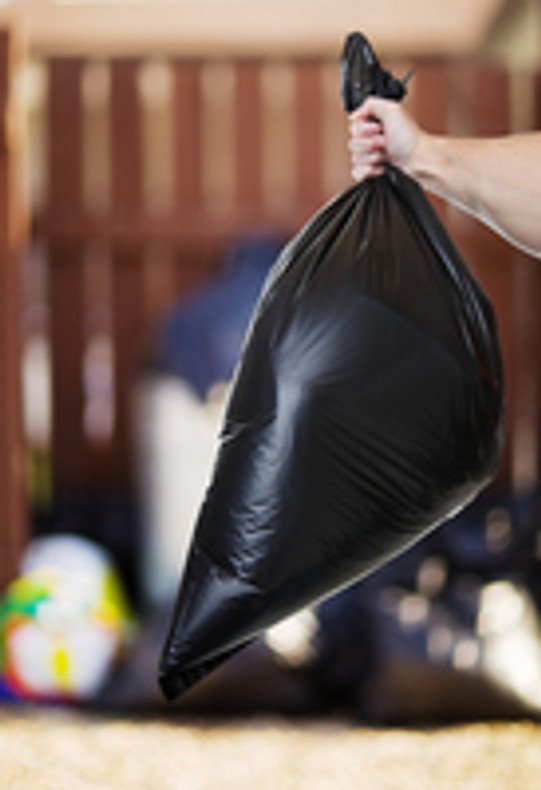We take the ubiquitous trash bag for granted. Available for our garbage and easily switched out, it's rare that anyone gives these modest, thin bags much thought at all. But, without them, our homes, offices, and other work places wouldn't be quite as pleasant as they are now. Think about these facts the next time that you take out the garbage and you will never take the trash bag for granted again.
1. The Trash Bag Wasn't Invented Until 1950.
Before the disposable trash bag was invented, people did a lot of burning in their back yards. Those home incinerators created poor air quality so when trash bags first came along, they were considered an improvement when it came to the environment.
In 1950, Canadian inventors Harry Wasylyk and Larry Hansen invented a green bag made of polyethylene for commercial use. Hansen worked for Union Carbide, who bought their invention and turned it into one of the most familiar products of the industrial age. In 1960, the first bags were manufactured for use in homes.
2. White is the Most Common Color of Garbage Bags.
While we are all familiar with the big black trash bags for yard waste, the single most common color of trash bags that are manufactured today is white. Originally made of thinner materials than the heavier original green bags, white trash bags quickly became a favorite among home owners.
The white plastic fit in with most home decors and created a clean look within the kitchen. On the downside, the thinner materials weren't strong enough to stand up to out side conditions, so most trash companies require that the thin, white kitchen trash bags be placed within either a stronger bag or within a trash receptacle.
3. Bio-Degradable Trash Bags Reduce the Amount of Plastics in Landfills.
Plastic trash bags quickly became a problem within landfills and chemists got to work to design a better bag. After years of experimentation, another Canadian chemist, Dr. James Guillet, took the industry a major step forward when he designed a biodegradable plastic in 1971.
Trash bags made from these materials break down over time and become compost in the landfill. While the original bags were more durable, they could take up to 1,000 years to decay. Most office trash bags in current use are made from a clear plastic material that quickly breaks down.
4. It is Estimated That One Million Trash Bags are Used Worldwide Every Single Minute.
That's a lot of bags which makes the industry a huge one with some dire environmental consequences. In the ocean, scientists estimate that there are now more bits of plastic floating around than their are zooplankton. Additionally, since petroleum is used in the production process, our world's resources are being taxed.
To reduce the numbers of plastic bags used on an annual basis, many cleaning companies are working to organize the trash better. When bins are designated for paper only or other dry products, trash bags don't have to be changed as often. That's good for both the environment and a company's bottom line.
The next time the you purchase trash bags, remember that you are purchasing a product that is relatively new in human history. While these bags are very convenient to use, solid planning reduces the quantities needed and helps to keep the world running smoothly.


